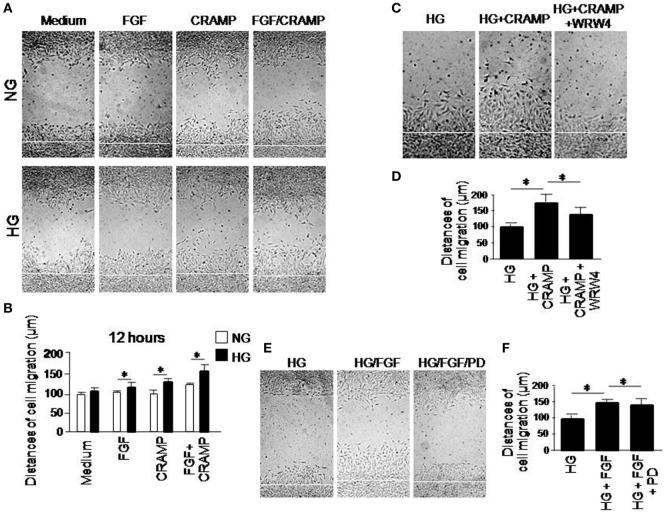Figure 3.
The effect of high glucose (HG) on formyl peptide receptor 2 (Fpr2)- and fibroblast growth factor receptor 1 (FGFR1)-mediated Müller glial cell (MGC) wound closure. Wound closure was measured to analyze the effect of cathelin-related antimicrobial peptide (CRAMP) (10−6 M) and b-FGF (10 ng/ml) on MGC migration toward the centerline of the wound under normal glucose (NG) or HG. (A) Wound closure measured at 12 h in the presence or absence of CRAMP or b-FGF. (B) Quantitative measurement of the distance of cell migration. *Indicates significantly increased rate of wound closure shown by MGCs cultured in HG compared with cells treated with NG (p < 0.05). (C) Inhibition by Fpr2 antagonist WRW4 of wound closure by MGCs under HG for 12 h. (D) Quantitative cell migration distance based on results shown in (C). *Indicates significant (p < 0.05) inhibition of CRAMP-induced wound closure by MGCs cultured in HG by the WRW4. (E) Inhibition by FGFR1 inhibitor PD 173074 (PD) of wound closure by MGCs under HG for 12 h. (F) Cell distance measured based on results shown in (E). *Indicates significant (p < 0.05) inhibition of FGF-induced wound closure by MGCs cultured in HG by the FGFR1 inhibitor PD 173074 (PD).

